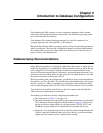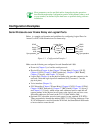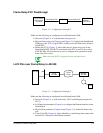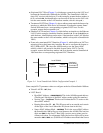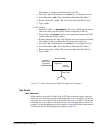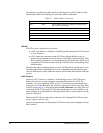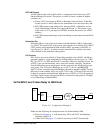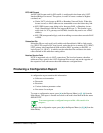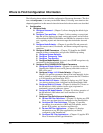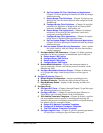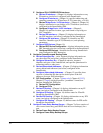
Introduction to Database Configuration 3-7
RFC1490 Format
An RFC1490 format used for SNA traffic is configured in the frame relay LLC2
Interface/Bridge Port record. The options, in order of lowest overhead to highest
overhead, are:
●
Native LLC2 (also known as BNN, or Boundary Network Node). When this
format is used, no MAC addresses are transmitted across the frame relay link.
●
802.5 SRB (source route bridge) (also known as BAN, or Boundary Access
Node. (SmartSwitch 1800 devices support BAN type 1). This format is gen-
erally used for 3174 gateways and AS/400s, because they need to see a MAC
address).
●
802.3 TB (transparent bridge), used when talking to routers that cannot do BAN
or BNN.
Subscriber IDs
Subscriber IDs are only used locally within each SmartSwitch 1800 to link records
(e.g. SDLC PU record to LLC host record), unless the device is running X.25, SDLC/
LLC2 primary (the SmartSwitch 1800 would be SDLC secondary to the FEP), or
logical ports (i.e., QLLC), in which case the subscriber IDs correlate to the static
routes defined in the subscriber routing tables.
PU1 Devices
PU1 devices can not be defined as Token Ring attached to the AS/400. AS/400 pro-
grammers might try to get around this by defining different device types (i.e., 5494/
PU 2.0 or PU 2.1) to 5294 and 5394 PU1 controllers. However, when this is done, the
ACTPU is not spoofed internally, and is sent to the remote controller. The Smart-
Switch 1800 cannot accept and respond, and the controller and AS/400 will go into
error mode. The 5394 can be RPQed to act as a PU2.1 device (see IBM RPQ
8Q0775); 5294 controllers cannot be RPQed, and must be attached as SDLC devices;
there are no issues with the 5494, as it is a PU2.0/2.1 node. 5294s and 5394s can only
be directly connected to SmartSwitch 1800 devices via SDLC or X.25 with speeds up
to 64 kbps. 5494s can be connected via SDLC or frame relay with speeds to 128 kbps,
or by Token Ring or Ethernet/802.3.
3x74s/SDLC over Frame Relay to SNA Host
Figure 3-6 Configuration Example 4
Make sure the following are configured in the local SmartSwitch 1800:
●
Protocols (Chapter 5), to load frame relay, SNA, and LLC2, and Bridging
(required with LLC2).
●
Virtual LAN ID (page 9-17), which is necessary for LLC2 functionality.
3X74
Frame
Relay
Remote
SS 1800
Local
SS 1800
Host
FEP/
NCP





